Best Shot Sizes & Loads for Pheasant & Quail Hunting
An In-Depth Look at Shot Sizes, Loads & Chokes for Pheasant & Quail Hunting
A good deal of my experience comes from 55+ years of hunting quail and pheasants, mostly in Illinois, but more recently in other states and involving other species. Reloading experience comes from shooting skeet since 1985 and loading many 100’s of thousands of shells over the years. Once I find a load that works well in skeet, it is usually very good for the bulk of my upland hunting. As I age and reflexes begin to slow a little bit, I find my 28 ga. is a better gun for me to carry and hunt quail with. 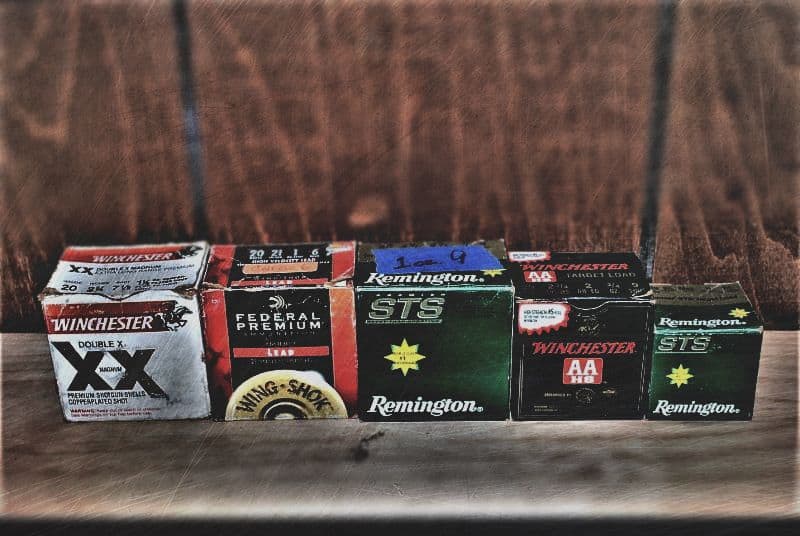
*Interested in an Orvis/ Shooting Sportsman Endorsed Upland Hunting Trip at Harpole’s Heartland Lodge? Experience some of the finest traditional wingshooting in the country! Click Here to Learn More >>*
Improvements in Ammunition for Upland Hunting
The first development was the improvement of ammunition. Paper hulls, fiber wads, soft shot, less selection of shot size, and little choice of shot materials were the order of the day when I started hunting back in the 60’s. Today, almost all hulls are plastic, shot is harder, shot is available in a more varied range of sizes and materials, wad columns are predominantly one piece and plastic, powders are more efficient, hulls are color coded (20 and 16) for safety purposes, and there are more ammunition manufacturers than the “big three” of my youth. Winchester, Remington, and Federal are producing the vast majority of the shells made in the U.S. There are some companies that have been purchased by one or more of these and are still sold under their original brand name. There are many imported brands available also. Many of these are easily reloadable. Consult publications put out by powder and reloading equipment manufacturers for recipes and components. ALWAYS FOLLOW THE PUBLISHED RECIPE AS VARYING FROM IT CAN CAUSE POSSIBLE DAMAGE TO THE GUN AND/OR INJURY/DEATH TO THE SHOOTER AND ANY BYSTANDERS.
I hunted pheasant, quail, and rabbits as a kid. Six shot for the big stuff and 8’s for quail were most commonly used. Shell selection in the 16, 28, and 410 was very limited and still is. For the 12 and 20 gauge, there is such a multitude of hunting shells available that it is difficult to know what to purchase sometimes. Often, the decision made is based on cost alone. I came from a small town and used what I could get my hands on which wasn’t always the correct load or shot size for what I was hunting. Interested in hunting wild quail or pheasant at a legendary American Wing-Shooting Lodge? Check out what Harpole’s Heartland Lodge Quail and Pheasant Hunting Lodge has to offer here>>
Best Shot Shells for Quail & Pheasant Hunting
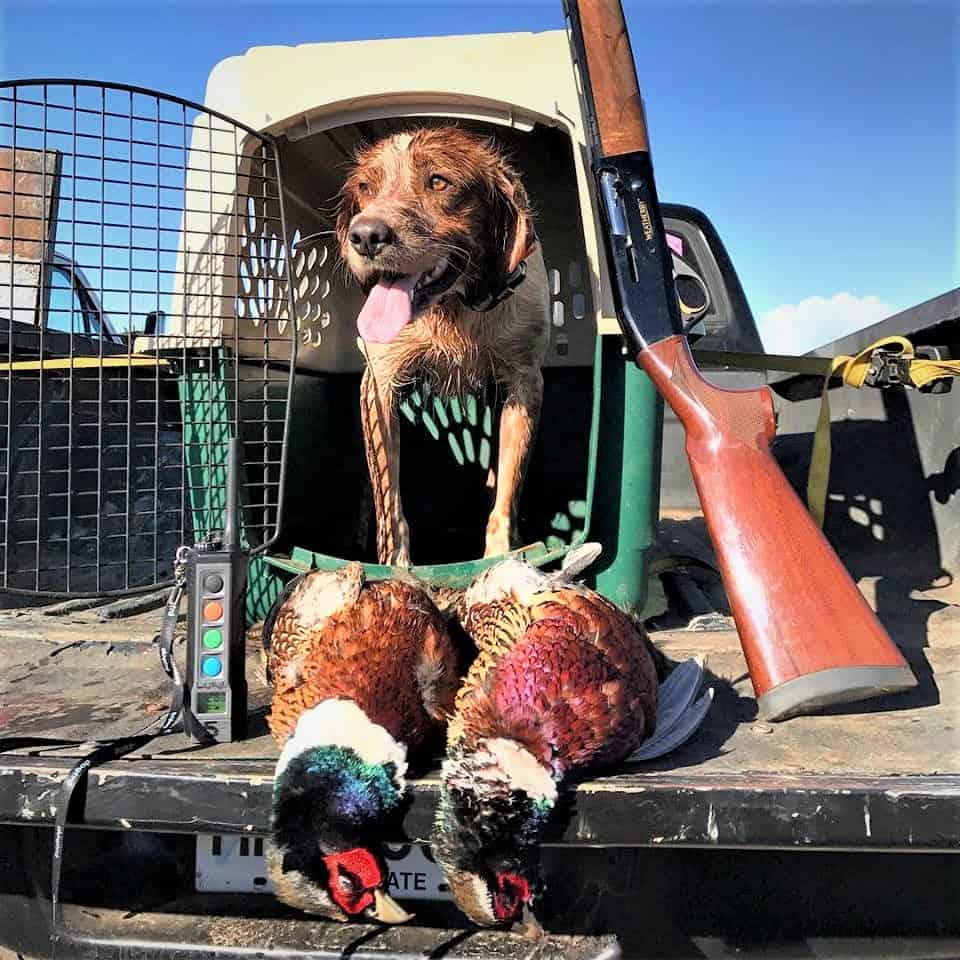
The 28 ga. 1-ounce loads are an attempt to make the sweet little 28’s into something they were never intended to be. These guns are light weight and fast handling. They are probably the most ballistically perfect of any of the gauges in the ¾ oz. standard loading. The one ouncers are abusive and not worth the extra expense if you can even find them on the gun shop shelf. If larger shot charges and shot sizes are necessary for what you hunt, go to a bigger gauge. For more information on hunting pheasant and quail with the 28 gauge, click here>>
Velocity & Ounce Size for Pheasant & Quail Hunting
Even if the shells you purchase are top of the line, there is no reason to have 1300+ feet per second lead loads to harvest upland birds, especially in 12 ga. heavy loads. Some manufacturers making these loads are sponsors for upland hunting tv shows which entices newbies that don’t pheasant or quail hunt much to buy them. The extra recoil is unnecessary, unpleasant, will eventually cause a flinching problem for the shooter, and they will not kill a pheasant or quail any deader than a standard velocity hunting load. Some specialty loads with semi-exotic names (Prairie “Butt Kickers” for example) are great for pheasant drives with long shots taken on wild flushes or over flushing bird dogs, but the quality of the pheasant for the table is sadly lacking. They tend to look like someone went postal on them with a large bore screwdriver. I have tried those in 12 ga. with 1 ¼ oz. of shot pushed at 1500 fps. I took two boxes with me on a pheasant hunting trip and shot exactly 2 of them, killing 2 pheasants before I made it back to the truck and swapped them out for my standard loads. I gave away all of those butt kickers to a kid that liked to be physically abused in the face and shoulder. He quit using them at the end of one box and gave the other away. It should be noted that both of us were using gas operated autos so recoil would be lessened.
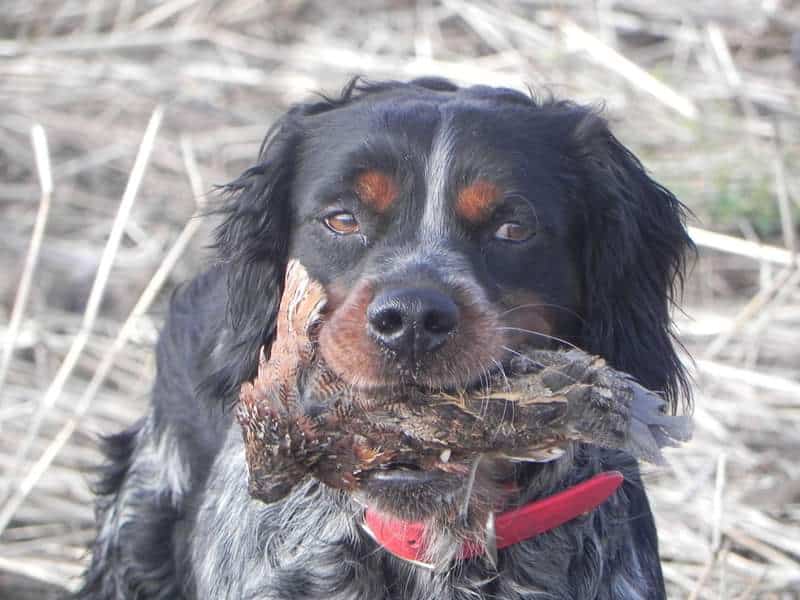
Size of Shot vs Quality of Table Fare
What will make a difference in hunting and table fare is the type and size of shot that is used. If the shot size is matched to the game and the customary distances that the game is taken, the results will be pleasing. I converted to hunting with copper plated shot back in the late 1980’s. Copper plated, or nickel-plated shot penetrates better, deforms less than plain soft lead shot, and even performs better in all choke choices. (Generally, copper or nickel-plated shot throws tighter patterns by one choke than the choke that is being utilized. For instance, a skeet choke with copper or nickel-plated shot will throw Improved Cylinder patterns.) This makes a difference in the quality of the table fare. There is less feather draw and blood in the bird when harvested because the shot tends to cut the feathers rather than wad up in them and pull the feathers into the meat. A distinct difference is visually apparent when dressing out pheasants and quail.
Years ago, my hunting buddies invited a fellow to hunt with us on opening weekend of quail and pheasant season in Illinois. He was the one shooting plain lead shot. The rest of us were shooting copper plated 7 ½ or 8’s. We harvested 35 quail that first morning. He had shot 6 of those. When we were done dressing out the birds, we told him to inspect them and see if he could pick out the ones he had shot. To his amazement, the task was very easily accomplished. Anything I can do to make the table fare better is worth any extra expense to me.
Choke Tubes for Upland Game
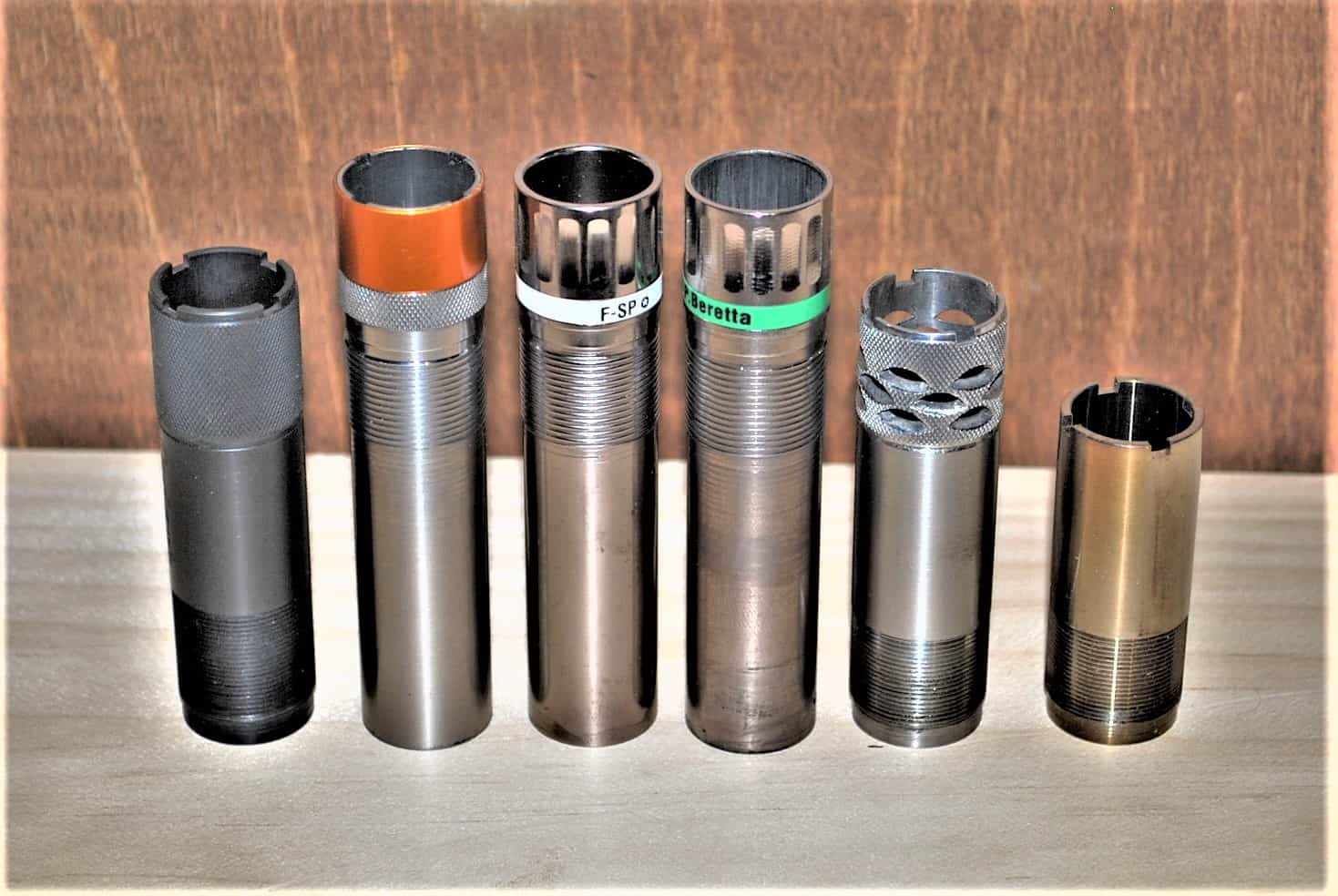
Screw in Chokes for Wingshooting
Then sometime in the 70’s or 80’s, a guy by the name of Stan Baker out on the West coast started making screw-in chokes for custom trap gun barrels. This revolutionary idea finally caught on and the rest is history. There is very little need for multiple barrels when all that is needed is to screw in a different choke. There are multitudes of different chokes with different features to get ourselves lost in. For my money, extended chokes rather than flush mounted ones are the way to go. They can be changed quickly in the field with fingers only. They are often color coded, so I do not have to carry my reading glasses to see what choke I want to change to. They can be plain or ported which can help with barrel jump and felt recoil. There are several after-market companies that make them for a wide variety of gun makes and models as well as factory choke tubes. There are even after-market companies that make custom chokes for specific loads to get the best possible performance. Waterfowl and turkey hunters have been the biggest beneficiaries of these specific custom chokes.
My advice in all of this is not to scrimp on the quality of the shells you hunt with. Pattern test the loads and chokes you hunt with to make sure they perform at the distances you customarily take your shots. I usually carry an extra choke in my pocket and a couple of different shot sizes in my vest in case conditions change and I need to change with them. Extremely windy days can necessitate going to a shot size or two larger and/or a tighter choke for those fast moving “turbo birds.”
What I Use for a Variety of Hunting
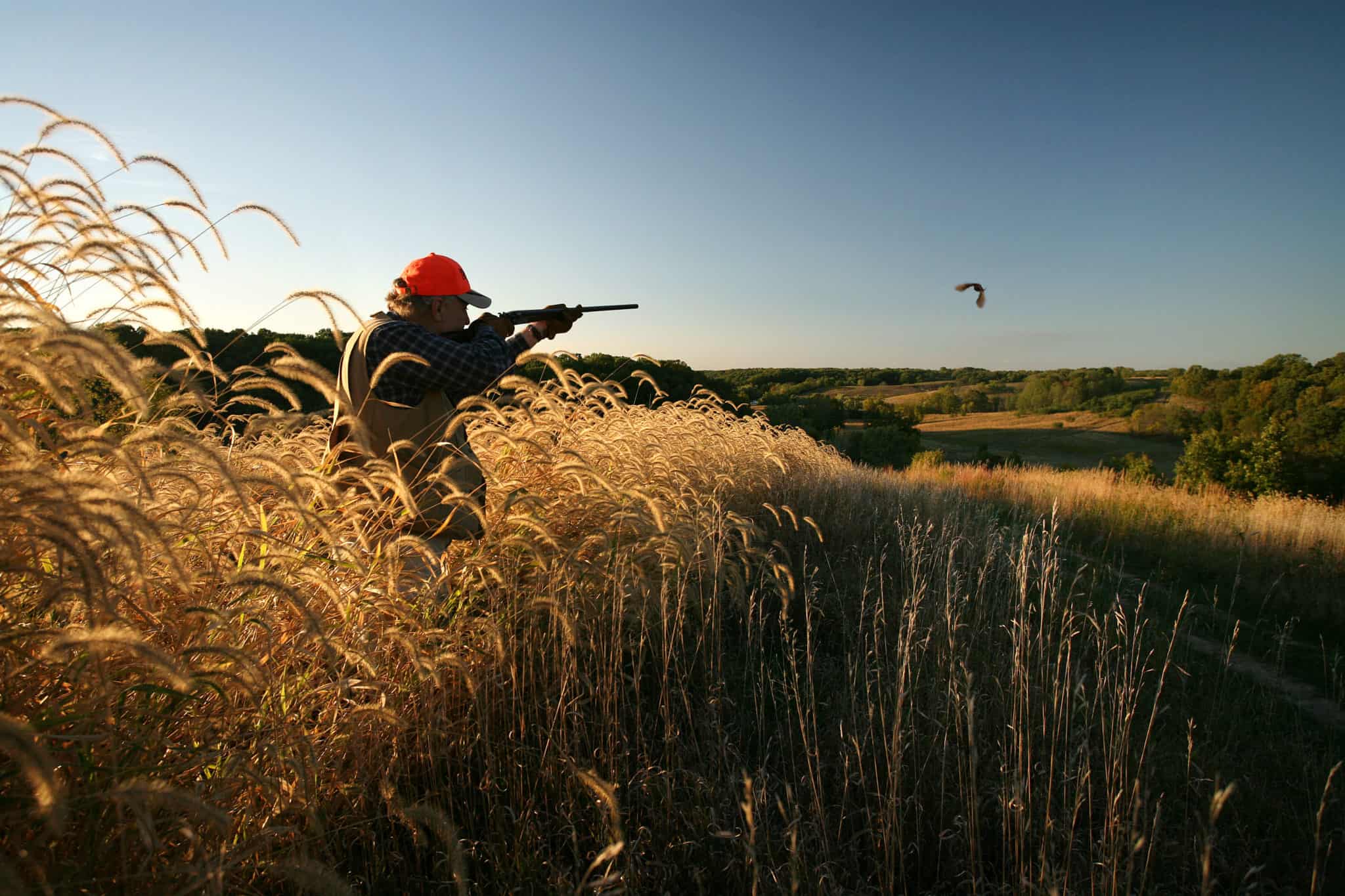
By Bud Shipp
The following is part of an article I wrote that was published in the 2013 “L’Epagneul Breton”, the publication for the Club de l’Epagneul Breton of the United States (CEB-US) and has been updated.
**At Heartland Lodge, we recommend using 7 1/2 shot for 12- and 20-gauge shotguns for our terrain and habitat across our quail and pheasant hunting properties.**
Follow the links listed for more information on Pheasant Hunting Packages, Wild Quail Hunts, Waterfowl Hunts or Combination Upland/Waterfowl Hunts. Harpole’s Heartland Lodge is an Orvis and Shooting Sportsman Endorsed wingshooting lodge located in West-Central Illinois specializing in world-class pheasant, quail and waterfowl hunting.
Phone- 217-734-2526
Email- Gary@HeartlandLodge.com
Last Updated: March 17th, 2023




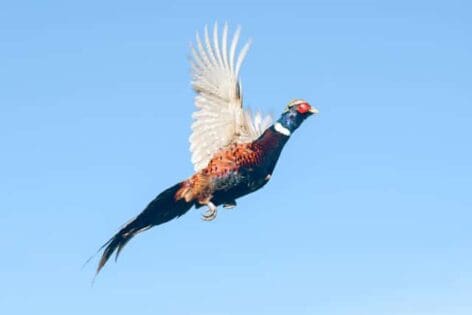
Would like firm price for pheasant & grouse packages for 2 & 3 people, & available dates, with & without your dogs. Thanks, Sam
Sure Samuel. You will receive a quote by email. Thank you!
I have a full box of Federal 16 gauge shotgun shells 50’vintage inherited from my father.Are they worth anything to anyone? Can send pictures.
Good write up. Your right about those Prairie loads. Ouch! I wasted some cash on a box. Won’t use them…
It’s a good article and covers the simple basics of shotgun loads and uses. Many of us tend to get technical with a outdoor shooting sport for no other reason then personal perfection or just being nitpick about small details. No real need to really be as nitpick as some of us really are when it comes to game shooting.
If you pattern your gun with various chokes, barrels, loads, and have the gun fit you right all will come together in the field eventually 😉
The one thing I do want to add is about the high end super shells or loads. Back 20 years ago when the steel switch happened full swing the companies were trying to update and sell off Lead shells that used to come in 25 count boxes. Most of those were 3″ or 2 3/4″ inch copper plated magnum field loads #4 #5 #6 #7.5 in both 12 and 20 gauge along with some 16 and 10 gauge shells. They started the whole 40-50 yard Turkey head shoot game and that’s why that market suddenly zoomed off for 20 years. It actually hurt the shotgun market as a whole and messed up American shotgun school of thought. Suddenly shotguns needed sights, scopes, and in turn looked more like a defensive shotgun then a actual true shotgun. 3 1/2″ inch foolishness for 12 and 20 gauge tried to take root and even 3″ inch 28 gauge jumped the ramp.
I use the Federal Praire Storms for years out of fairly light guns like a Beretta SO and don’t find them a problem. It is just an issue of getting used to the recoil. I learned to shoot a .458 without flinching by getting used to it, shooting a few rounds a day. It is mostly a mental thing. Really is the recoil from any gun worse than many contact sports that most males consider fun? No, not at all.
Really, everyone I know here in Idaho uses Prarie Storms for pheasant. However, I accept that many people back East are wimps and must use lesser loads so as not to hurt their tender shoulders.
It’s all a matter of preference and experience and the author gave us some of each from his perspective. With flushing dogs, I most definitely want the 3″ 1500fps shells with a full choke to reach out knock them down. We typically have one shooter with a full choke for those birds that try to get away from the hunters with less than perfect aim. I prefer to use Fiocchi Waterfowl Steel hunting shells – 12 ga, 3 in, 1-1/8 oz, 1500 fps and #6 shot size. It’s a good all around shell and as one of those east coast wimps that Jim lamented about, I can only respond with “What recoil? Didn’t feel thing”.
Patrick, i picked up a 16 a few weeks ago, first shotgun. let me know if those rounds are still hanging around.
After reading your article I found some Federal Premium Upland Copper-Plated shot at my local BassPro… 28 GA – 3/4 Ounce 7 1/2 shot, very excited to give it a go on some Quail in Central Florida
I’ve hunted pheasants in mi.for almost 50yrs.now and I prefer 2 3/4″#5 super x or express 12 or 20ga.and the same in 7 1/2shot for grouse.l
BOSS Shotshells make 28ga copper plated bismuth nontoxic.
I’ve had the most fun with 12 gauge, 2 3/4″ semi auto sandwiching a 4 shot in between 2- 6’s while hunting Pheasants in Pa. LOL. Back in the 80’s!
Found this very informative. Thank you!
thank you,
there should be more of this bought into hunter safely education. It can a bit intimidating for a new hunter to understand thier gun and the correct shells to use. Most go by the picture on the box.
A 20 gauge quail gun gun loaded with 1 ounce of number fives it’s hard to beat for pheasant, I was lucky enough to hunt in the 1970s and 1980s,,,,,northern Missouri ,southern Iowa ,southern Nebraska and Kansas …Of course there was birds everywhere in the 70s and 80s. Now my hunting partner is a five year old Vizsla I raised from a puppy.
I still recall the excellent accommodations, food and service (attention to details), and especially the genuine friendliness and down-home atmosphere from my stay at the Lodge. It’s just hard to comprehend it was twenty-eight years ago… Please give my warmest regards to Miss Wanda and Miss Ann. They are two beautiful ladies in a world where that concept seems to be forgotten! Also, thank you Gary for the amazing time I had there. I was incredibly excited the entire time 🙂 Hopefully, I can visit the lodge again soon…
Good Luck/Best Wishes!
p.s. the food was the best I have ever experienced!!! even considering some of the five star establishments I have dined in all over.
Mason Fischer
Thank you Mason! It makes me very happy knowing you still have pleasant memories of your experience with us 28 years ago. I hope you can return soon. It would be great to see you! Gary
I have been hunting upland birds here in RI as well as Maine and New Hampshire with and without dogs since 1965. My go to shotguns are 12 gauge one a Parker and second a B-80. After trying several loads through the years I have settled on heavy field loads 1 1/8 to 1 1/4 oz # 6 shot as a compromise to pattern density and distance power. As far as chokes the Parker is mod/full the B-80 invector and use the imp cyl or skeet choke. I also alter using my reloads and factory loads which are duplicated. The end of story is I get my birds and if not is was a miss. Good hunting and shooting to all.
When I was really young I followed my dad around as he shot pheasant and quail pointed by our German Shorthair.
My dad just used #6 shot for everything.
When I began to hunt we no longer had dogs so tbe strategy changed and shots were farther.
We used #6 for the first shot and #5 for follow ups.
Worked for us.
I hunt federal ground along the Dellaware in jersey and use 5 federal upland loads works great